Episode 29: Sgt. Lawrence Provost – 9/11
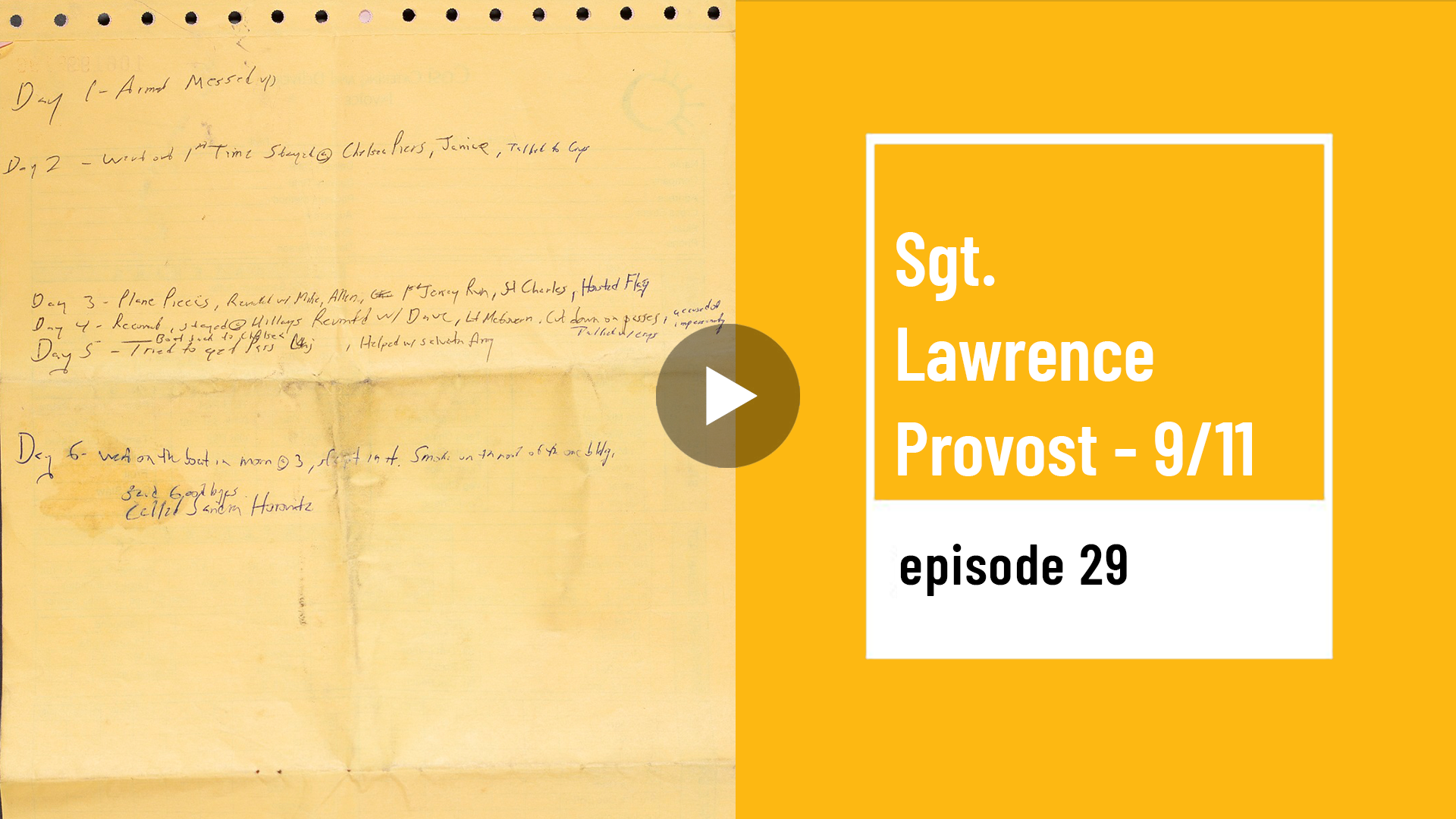
In remembrance of the terrorist attacks on September 11, learn about a series of objects that belonged to and used by Sgt. Lawrence Provost, a U.S. Army Reserve Soldier and Ground Zero volunteer in New York City.
Episode 28: Sgt. York’s Helmet
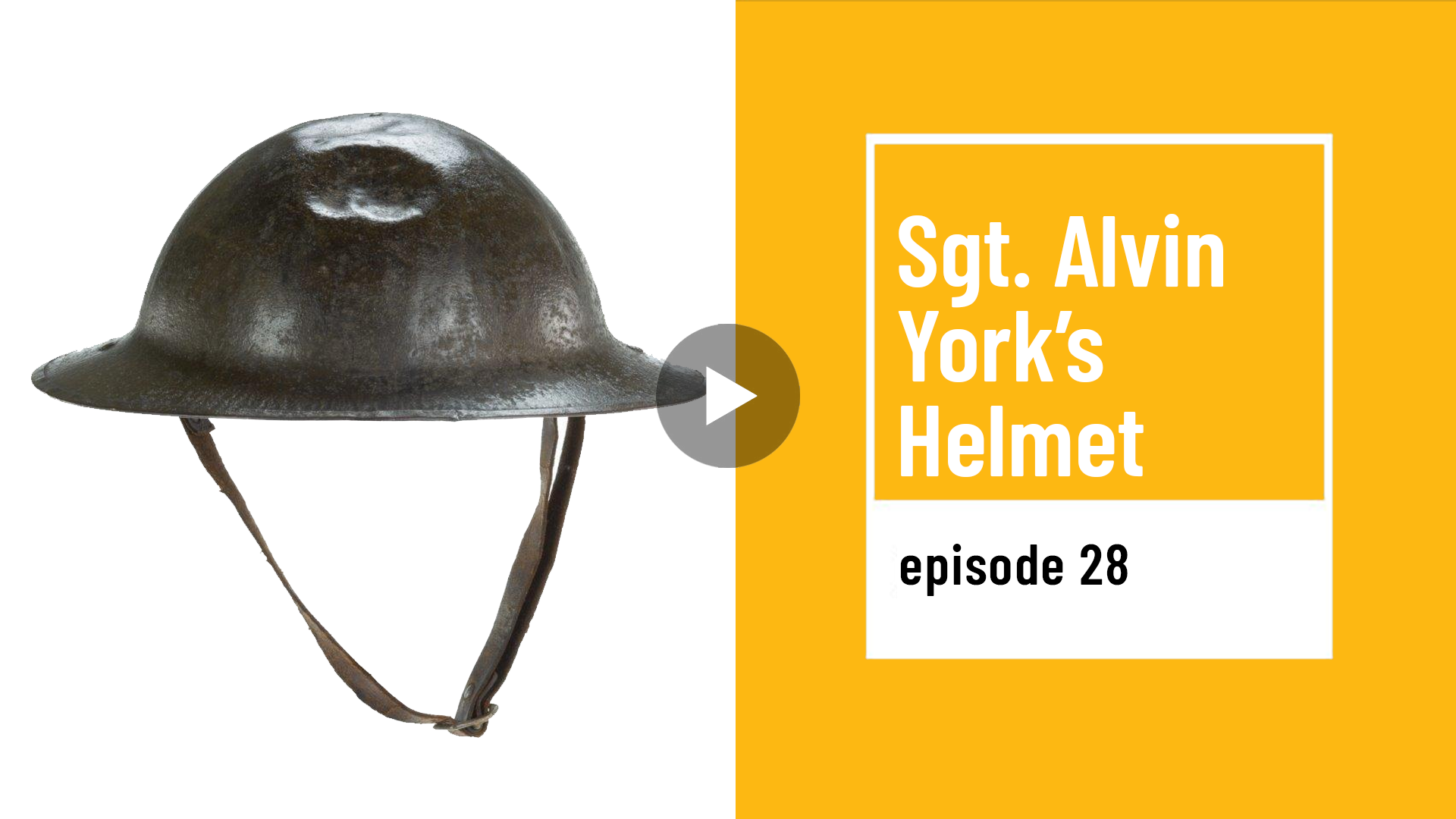
In this episode, learn about the iconic olive-drab Model 1917 trench helmet worn by Sgt. Alvin York during his Medal of Honor action in October 1918 during the Meuse-Argonne Offensive.
Episode 27: Higgins Boat
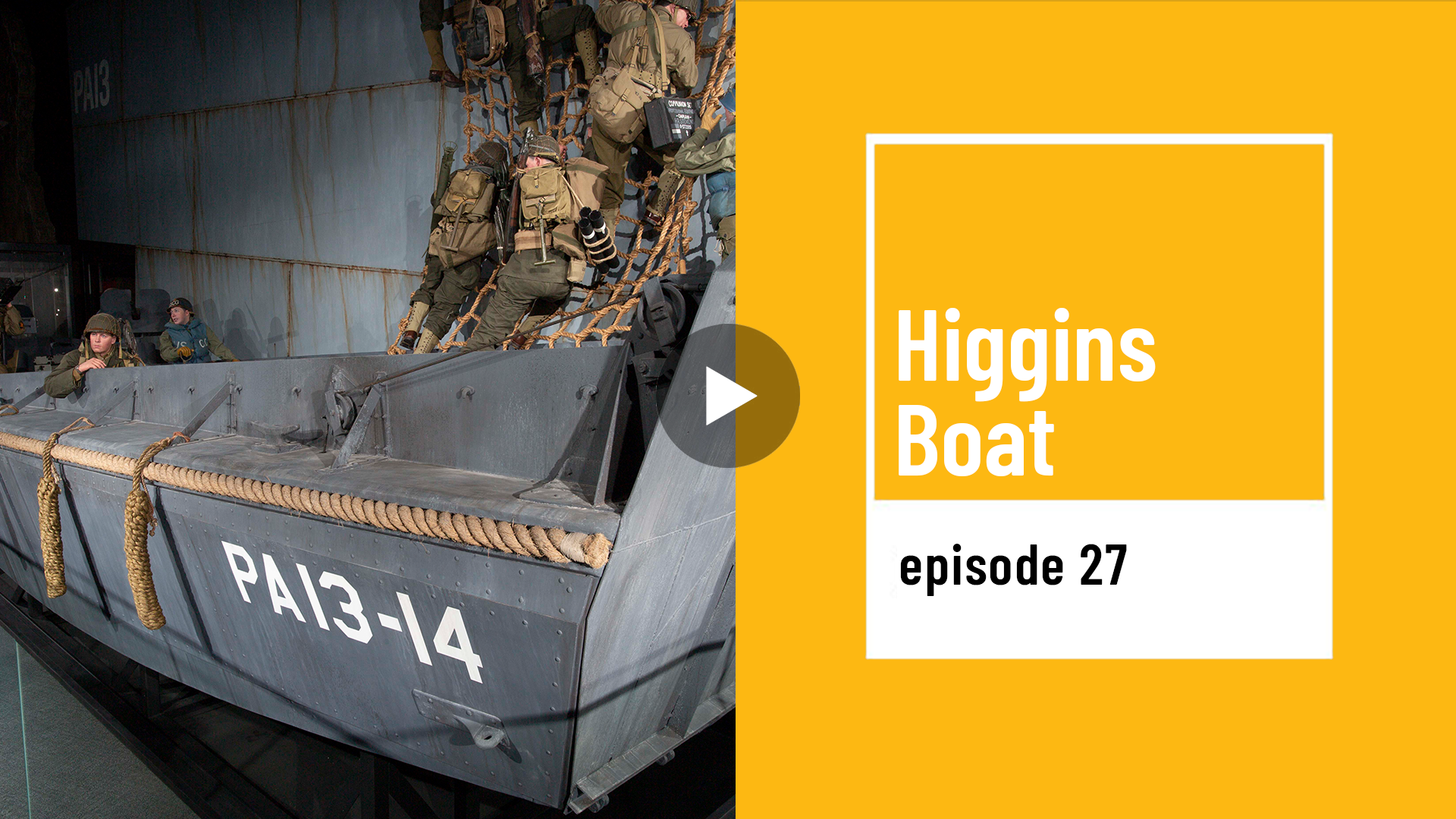
In honor of the 80th anniversary of D-Day, learn about the Landing Craft, Vehicle, Personnel, or LCVP, better known as the Higgins Boat, featured prominently in the Museum’s Global War Gallery in this episode of Curator’s Corner.
Episode 26: 6-Pounder Gun Tube
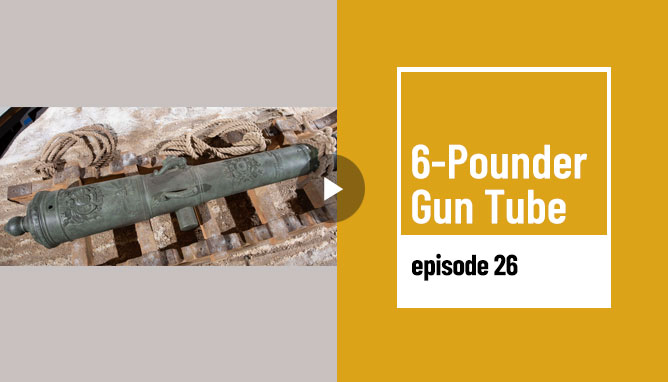
In this episode, learn about the French 6-pounder gun tube used to interpret the “Knox Trail” story in the Founding the Nation Gallery during the Revolutionary War. The scene depicts one of Knox’s sleds carrying a 6-pounder cannon through the cold New England Wilderness on its way to the outskirts of Boston in the winter of 1775-1776.
Episode 25: Soldier’s Pocket Bible
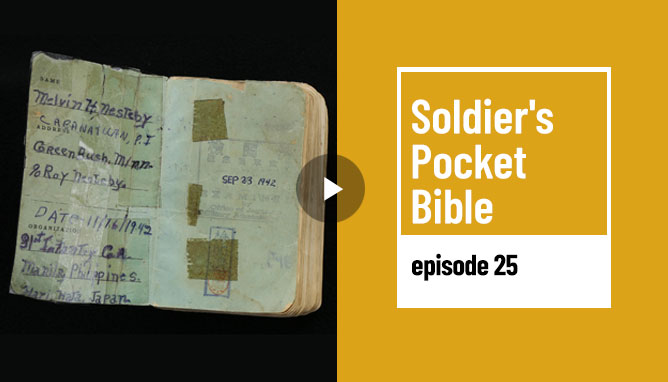
In this episode, learn more about the small pocket bible carried by Pvt. Melvin Nesteby throughout his incarceration in several Japanese POW camps following his capture in Bataan in April 1942. The bible is currently on display in the Global War Gallery.
Episode 24: I-See-O’s Headdress
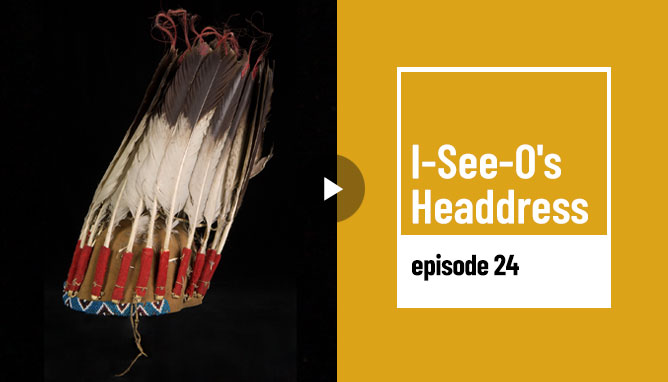
In this episode, learn more about the life and career of the last known Kiowa Indian Scout to serve in the U.S. Army, 1st Sgt. I-See-O, and his intricate Eagle Feather Bonnet on display in the Army and Society Gallery.
Episode 23: Operation Urgent Fury
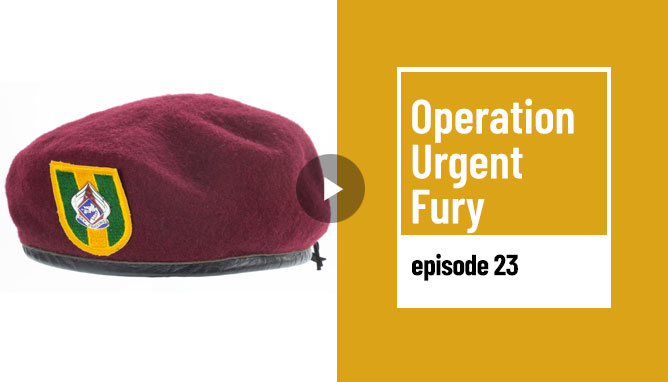
In this episode, learn more about the artifacts that tell the story of Operation Urgent Fury outside the Cold War Gallery at the Museum. 2023 marks the 40th anniversary of the operation to invade Grenada to protect 700 American medical students from a Cuban-supported coup.
Episode 22: Working Dogs at War
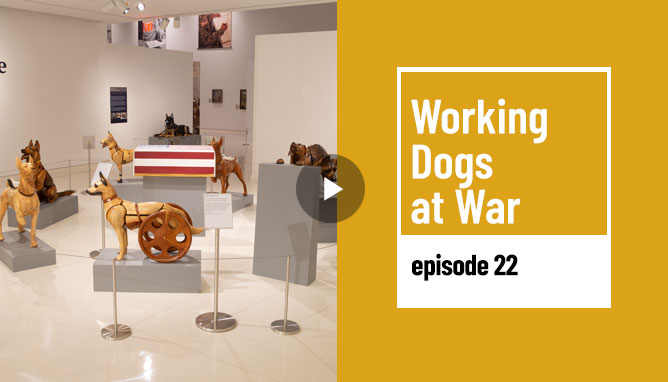
In this episode, learn more about the latest traveling exhibit—”LOYAL SERVICE: Working Dogs at War,” on display in the Special Exhibition Gallery for a limited time.
Episode 21:Reilly’s Battery Flag
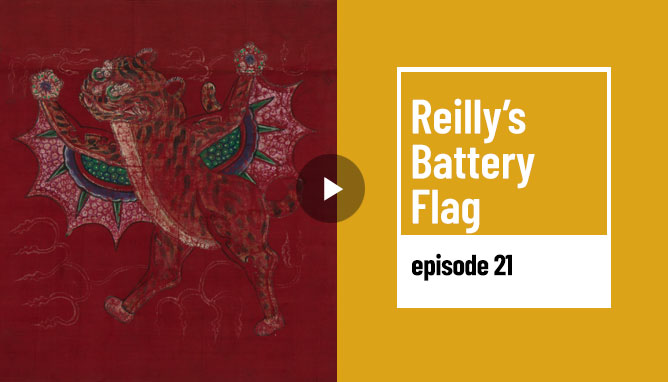
In this episode, learn more about this interesting artifact from an often-forgotten conflict at the turn of the twentieth century. This battle flag was taken by U.S. Army 1st Lt. Louis R. Burgess, a Soldier with Capt. Henry Reilly’s Battery F of the 5th U.S. Artillery, better known as “Reilly’s Battery,” during the Boxer Rebellion.
Episode 20: Zouave Uniform
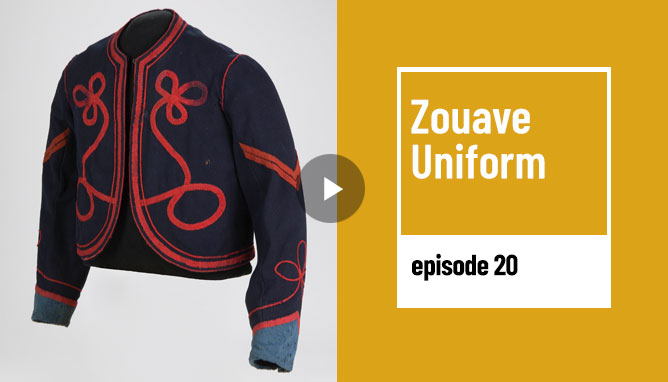
In this episode, learn more about the unique Zouave jacket and fez on display in the Founding the Nation Gallery. These artifacts, attributed to Cpl. Matthew Bradley, are one of the few Civil War-era Zouave uniforms that are known to have survived today.
Episode 19: American Long Rifle
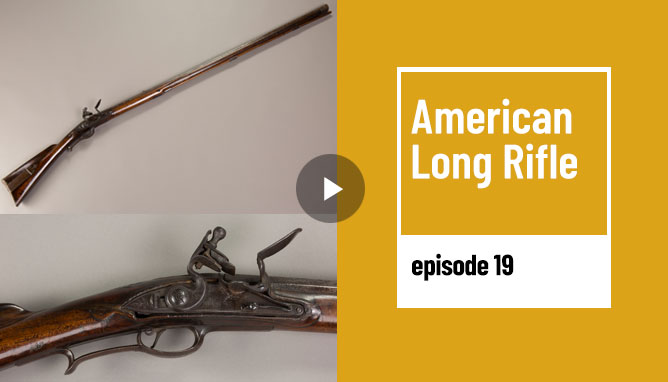
In this episode, learn more about the American Long Rifle, a popular and effective fighting weapon amongst specialized units within the Continental Army during the American Revolution. This rifle, attributed to Thomas Tileston, is the second earliest signed and dated iron-mounted American Long Rifle from New England.
Episode 18: Nisei Soldier Senninbari
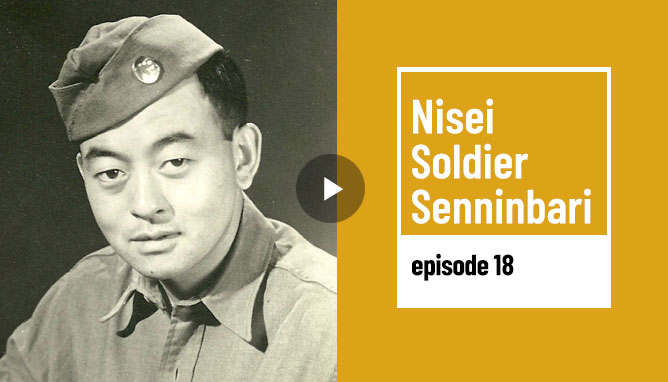
In this episode, learn more about this ornate senninbari, a Japanese tradition of craftsmanship believed to confer protection, strength, and courage to the wearer, made especially for Staff Sgt. Jimmy M. Mizote, 442nd RCT, by his mother during the World War II.
Episode 17: Berry’s Sword, Battle of Baltimore
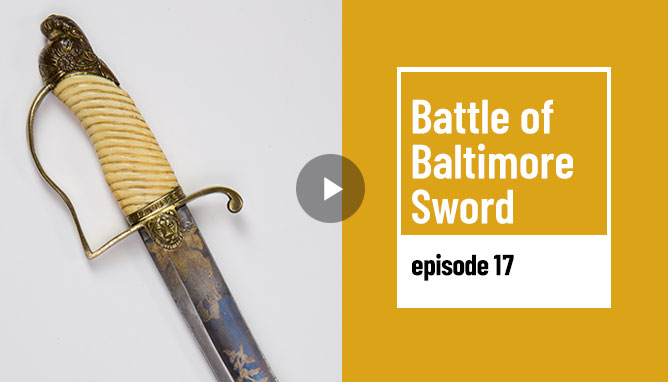
In this episode, learn about Capt. John Berry’s sword and scabbard on display in the Founding the Nation Gallery. Berry carried this sword with him at the Battle of Baltimore during the War of 1812, where his service gained national attention.
Episode 16: Chamberlain’s Civil War Gauntlets and Boots
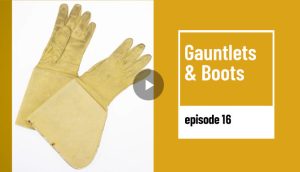
In this episode, learn about Brig. Gen. Joshua Chamberlain’s Civil War gauntlets and boots on display in the Preserving the Nation Gallery. Chamberlain, best known for his heroic role in the Battle of Gettysburg, led the famous “bayonet charge” of the 20th Maine down Little Round Top. He also was present at Appomattox in 1865 where he received the Confederate surrender of arms, officially ending the Civil War.
Episode 15: Traveling Exhibit – “So Ready for Laughter: The Legacy of Bob Hope”
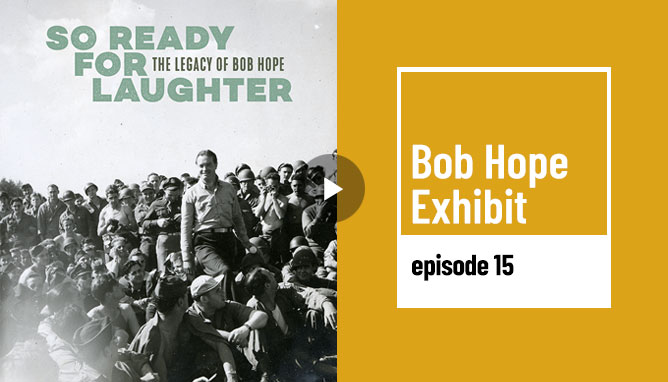
In this episode, learn more about the traveling exhibit—”So Ready for Laughter: The Legacy of Bob Hope, on display in the Special Exhibition Gallery through January 2023.
From World War II to Desert Storm, Bob Hope brought laughter to over 11 million service members who were stationed overseas. His humor and personal style connected strongly with Soldiers, which also aligns with the Museum’s mission: sharing the history of the U.S. Army through the eyes of Soldiers. As Soldiers experience the impact of war—being away from home and family and missing their life back in the United States—Bob Hope briefly helped fill that void by providing entertainment and a chance for Soldiers to forget about the war. He brought home to these faraway places and had a positive impact on their morale.
Episode 14: Flight 93 – Slate Angel
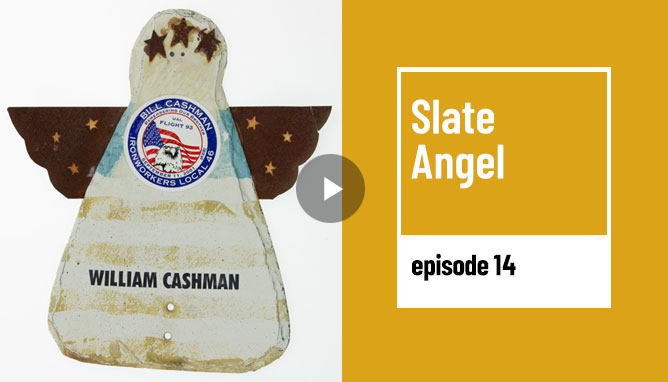
In this episode, learn more about the Soldier story of Billy Cashman and how Flight 93’s impact site at Shanksville, Pa. transformed to honoring the victims within hours after its crash on September 11, 2001.
Episode 13: M2 Helmet
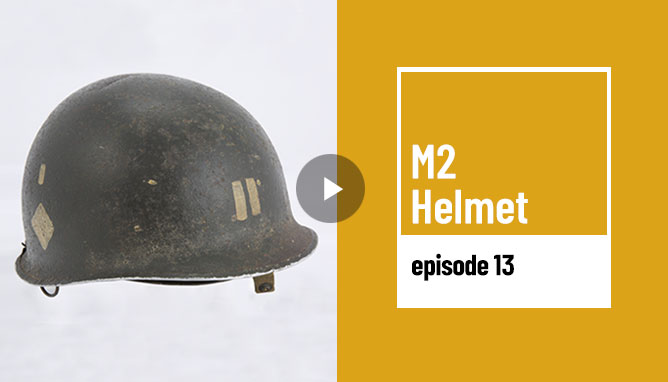
In this episode, learn about Capt. William G. Burd’s M2 Parachutist Helmet on display in the Global War Gallery. Burd, a paratrooper with the 501st Parachute Infantry Regiment, 101st Airborne Division during World War II, donned this helmet during Allied combat drops in support of Operation Overlord and Operation Market Garden.
Airborne operations utilized paratroopers or military parachutists to jump in behind enemy lines. It was soon discovered that these specially trained Soldiers required modifications to the general issue M1 helmet, so their headgear would stay on during their descent. Produced by the McCord Radiator Company beginning in 1942, the M2 Parachutist Helmet represents one of the many advancements in wartime technologies that increased the U.S. Army’s capability as a fighting force during World War II.
Episode 12: Super 6-1 Engine
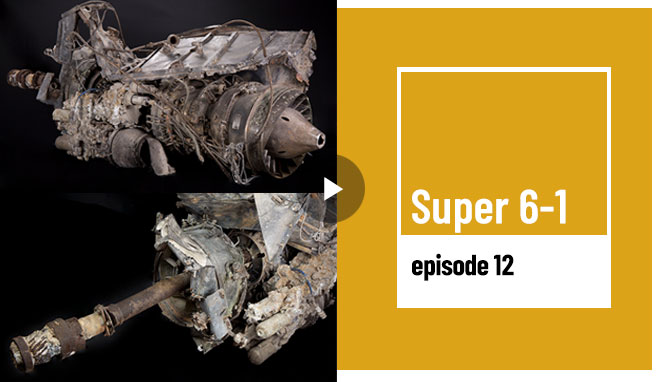
Super 6-1 was the call sign for the MH-60L Black Hawk helicopter that was struck by a direct hit from a Rocket Propelled Grenade fired by Somalian forces. This action turned the simple raid to capture key warlords into a grueling 2-day battle where 18 American Soldiers were killed, and 73 wounded.
Both pilots, Chief Warrant Officer Cliff Wolcott and Donovan Briley, were killed during the crash. Staff Sergeant Daniel Busch, a Delta Force Soldier was mortally wounded defending the remaining crew after the crash. This engine was recovered 20 years after the battle and then repatriated to the United States in August of 2013.
Episode 11: Myers Brothers
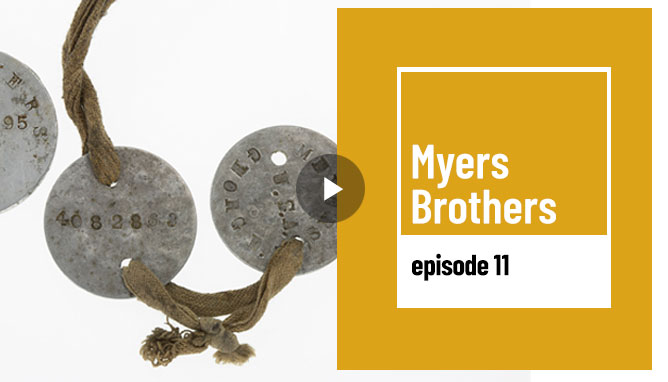
In this episode, learn about the personal items of the Myers Brothers on display in the Nation Overseas Gallery. One of the Museum’s more iconic collections on display – items belonging to three brothers who all served in the American Expeditionary Forces together – Private George Myers, Private First Class Paul Myers, and Sergeant Frank Myers.
It was common during World War I for multiple, immediate family members to serve at the same time due to widespread volunteering and the military draft. The story of George, Paul, and Frank is emblematic of wartime mobilization.
Episode 10: Militia Snare Drum
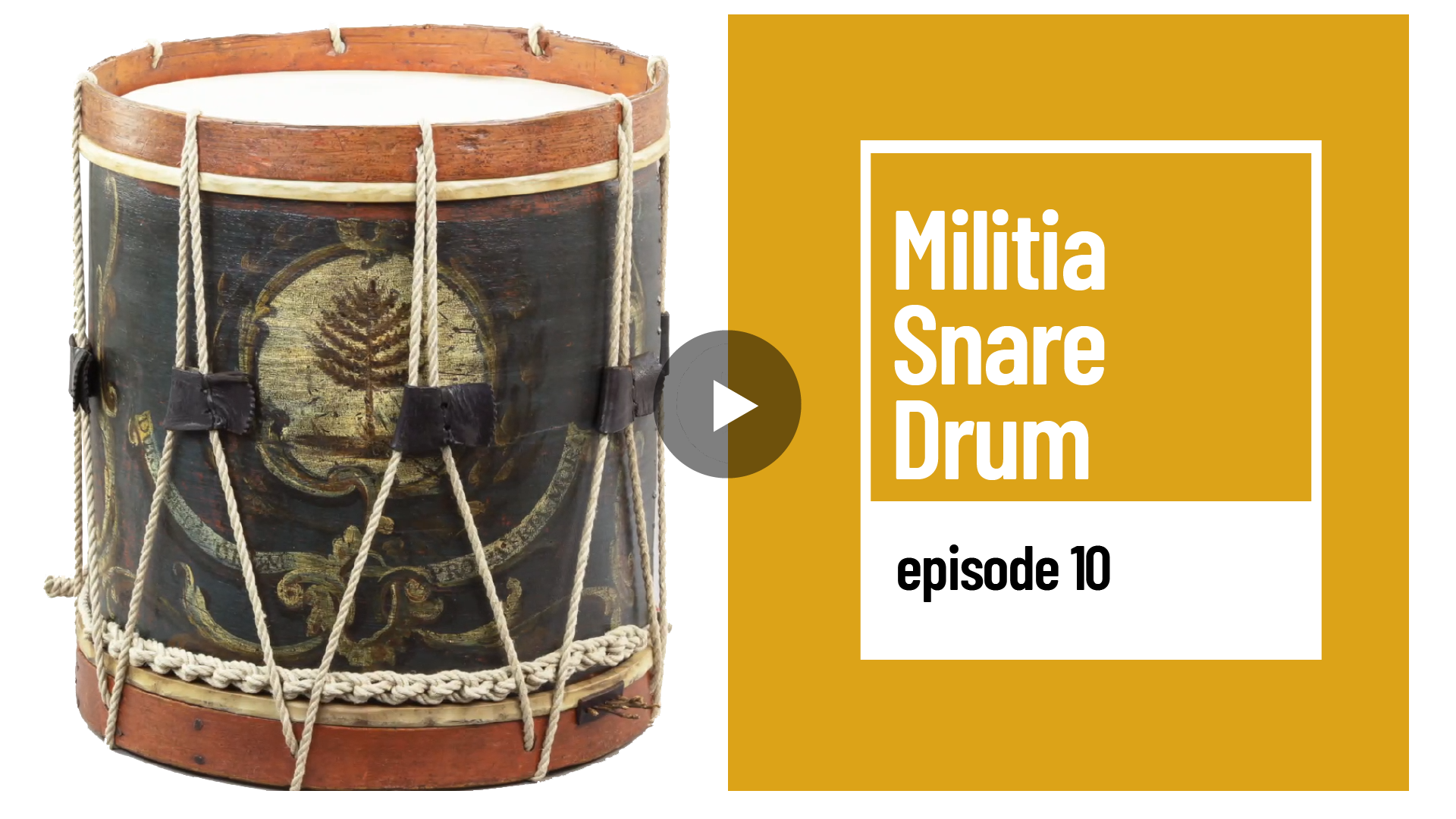
In this episode, learn about the rare, militia snare drum on display in the Founding the Nation Gallery. The pine tree motif is a symbol of the Massachusetts Bay Colony. Underneath the tree written in Latin is the phrase, “It is sweet and proper to die for one’s country.”
This drum, made around 1750, is a reminder of how important music and instruments were on the battlefield. The militia snare drum was used to build morale during war. More importantly, it was a medium of communication amongst the troops. This snare drum and others just like it, helped the U.S. Army achieve victory.
Episode 09: Liberty Loan Bonds
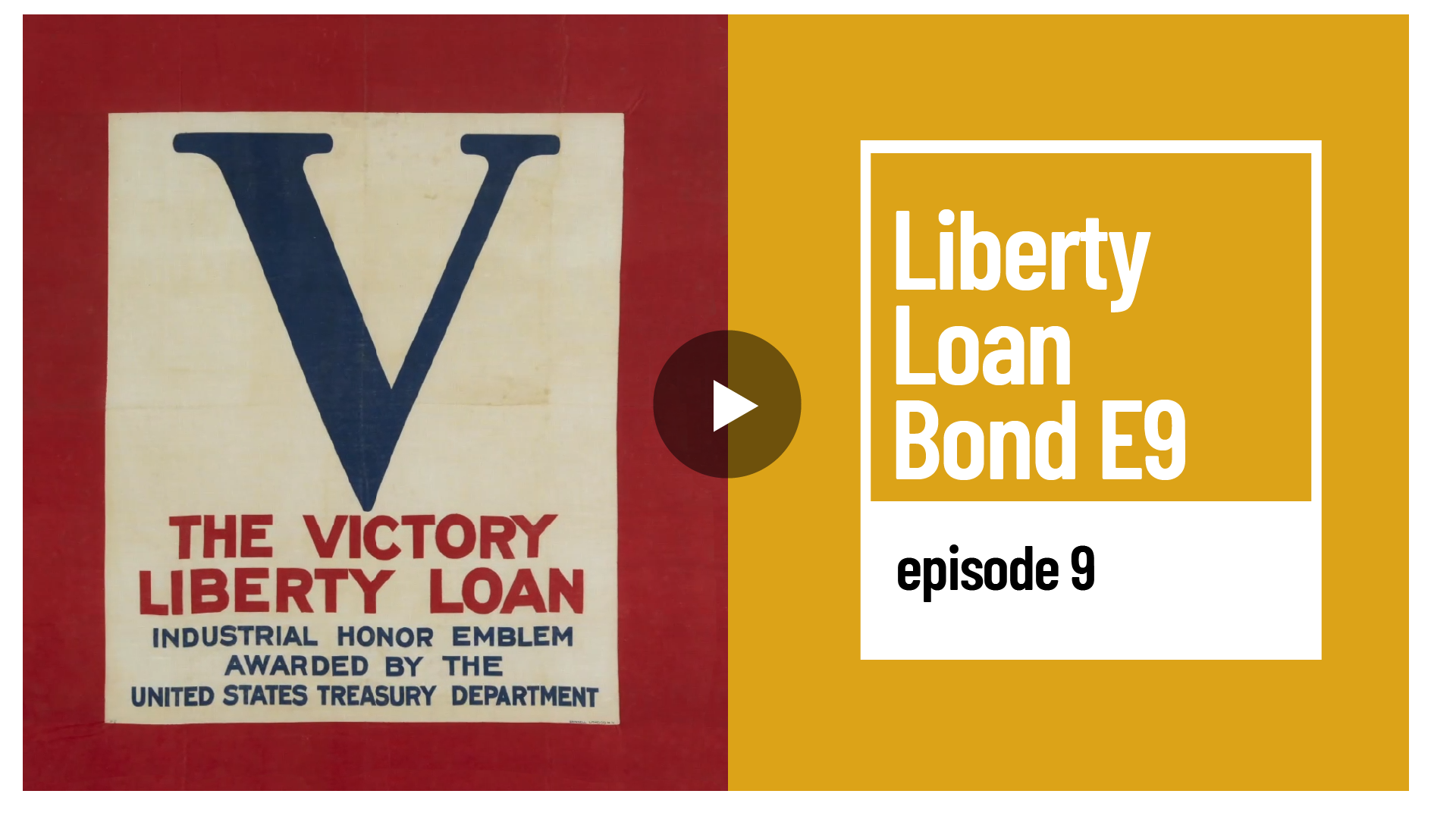
During World War I, the United States government borrowed money from its citizens in order to help finance the war effort and called it the “Liberty Loan.” In total, there were five Liberty Loans drives during the war, with the fifth being termed as the “Victory Liberty Loan.”
The Liberty Loan bond drives were highly effective. With the help of celebrities, civilian organizations, and federal agencies, over 20 million individuals had bought bonds, and more than 17 billion dollars had been raised for the war effort. Purchasing bonds became a symbol of patriotic duty for many citizens.
Episode 8: The M1 Helmet
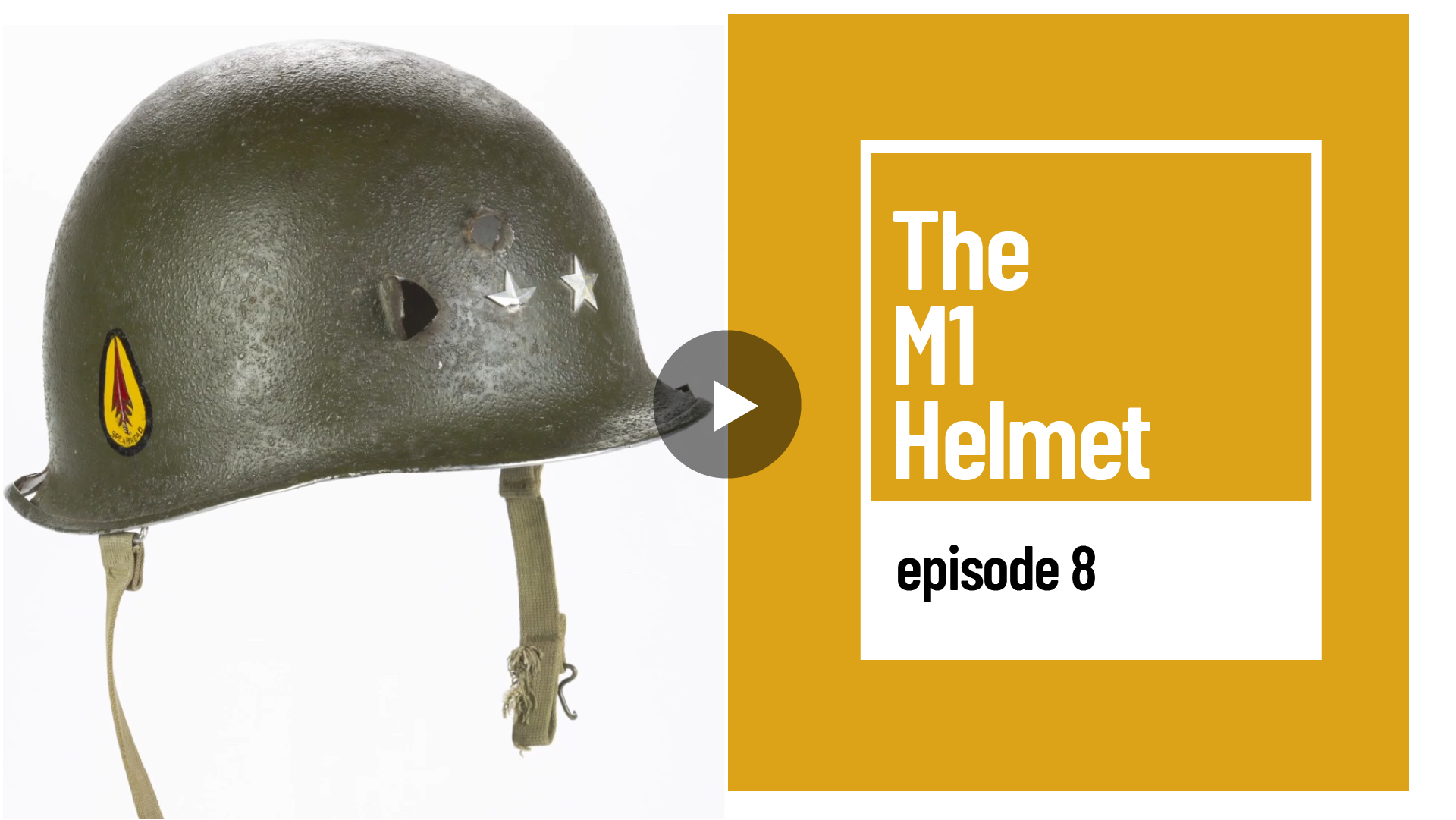
The M1 Helmet was introduced during World War I and modified in World War II. This piece of equipment protected Soldiers from flying fragments for the sides and back of the head. The M1 proved itself to be one of the most iconic items of military equipment. Like many other Soldiers during World War II, Major General Maurice Rose wore an M1 Helmet. As a young Soldier, 1st. Lt. Rose sailed to France with the AEF. He rose to the rank of major general. On March 30, 1945, Maj. Gen. Rose was killed instantly when a German tanker opened fire, striking him with a total of 14 bullets. He was the highest-ranking Jewish officer in the U.S. Army at his time of death and the highest-ranking American killed by enemy fire in the European Theater. Learn more about the M1 Helmet and Maj. Gen. Rose in episode 8.
Episode 7: A Vietnam Soldier’s Story
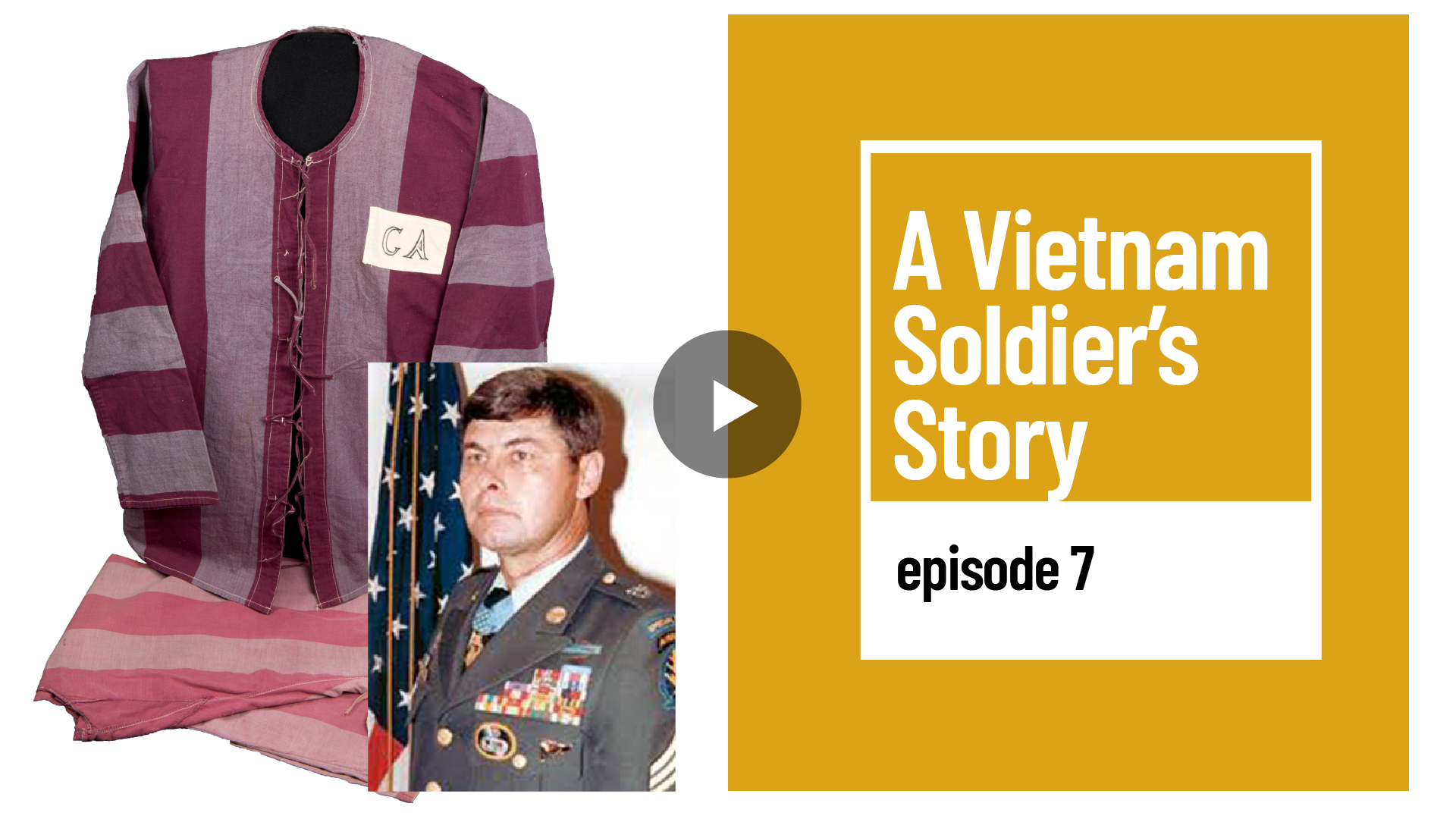
In this episode, we honor Vietnam War Veterans for their service, dedication, and sacrifice. Learn the story of Staff Sgt. John Cavaiani through the pajamas he wore while being held captive by North Vietnamese Soldiers. Staff Sgt. Cavaiani’s heroic actions on Hickory Hill lead to him being captured and held as a prisoner. After spending two years in multiple prison camps, Staff Sgt. Cavaiani was awarded the Medal of Honor, Bronze Star, and Purple Heart in 1973.
Episode 6: K9 Veteran Stories
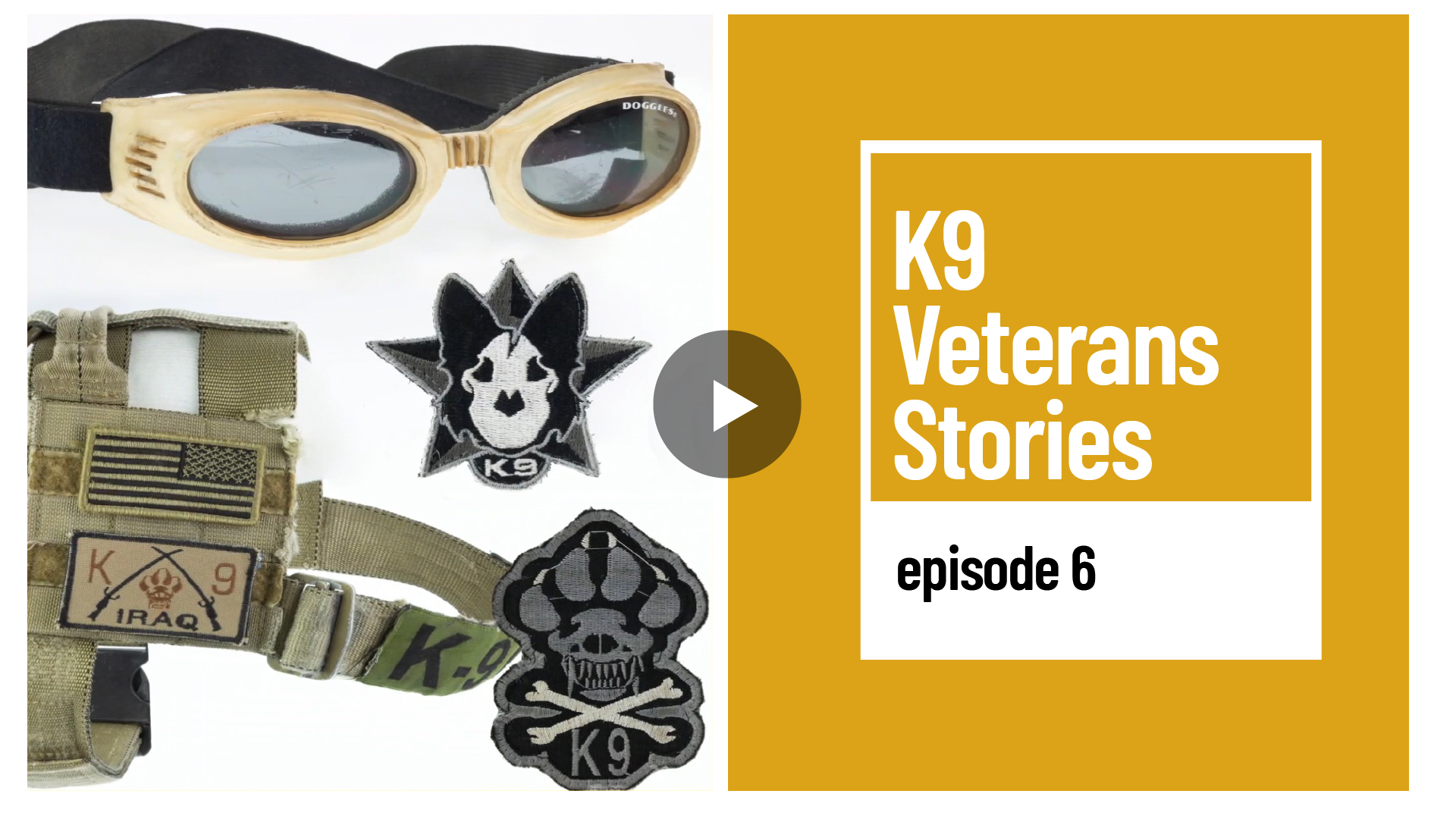
Military working dogs have been part of every conflict since World War II. With their acute sense of smell and training, these Army dogs can detect threats such as snipers, mines, gas attacks and then protect Soldiers and civilians by alerting their handlers of the danger. Military working dogs and their Soldier handlers are a team and often form a close bond. The Army recognizes the unique connection between a Soldier and their working dog and in 2000, a law was passed allowing Soldiers to adopt their working dog partner when the dog is retired from service. Explore select working-dog artifacts and Soldier stories shared at the Museum to learn more about their service.
Episode 5: The Art of Soldiering
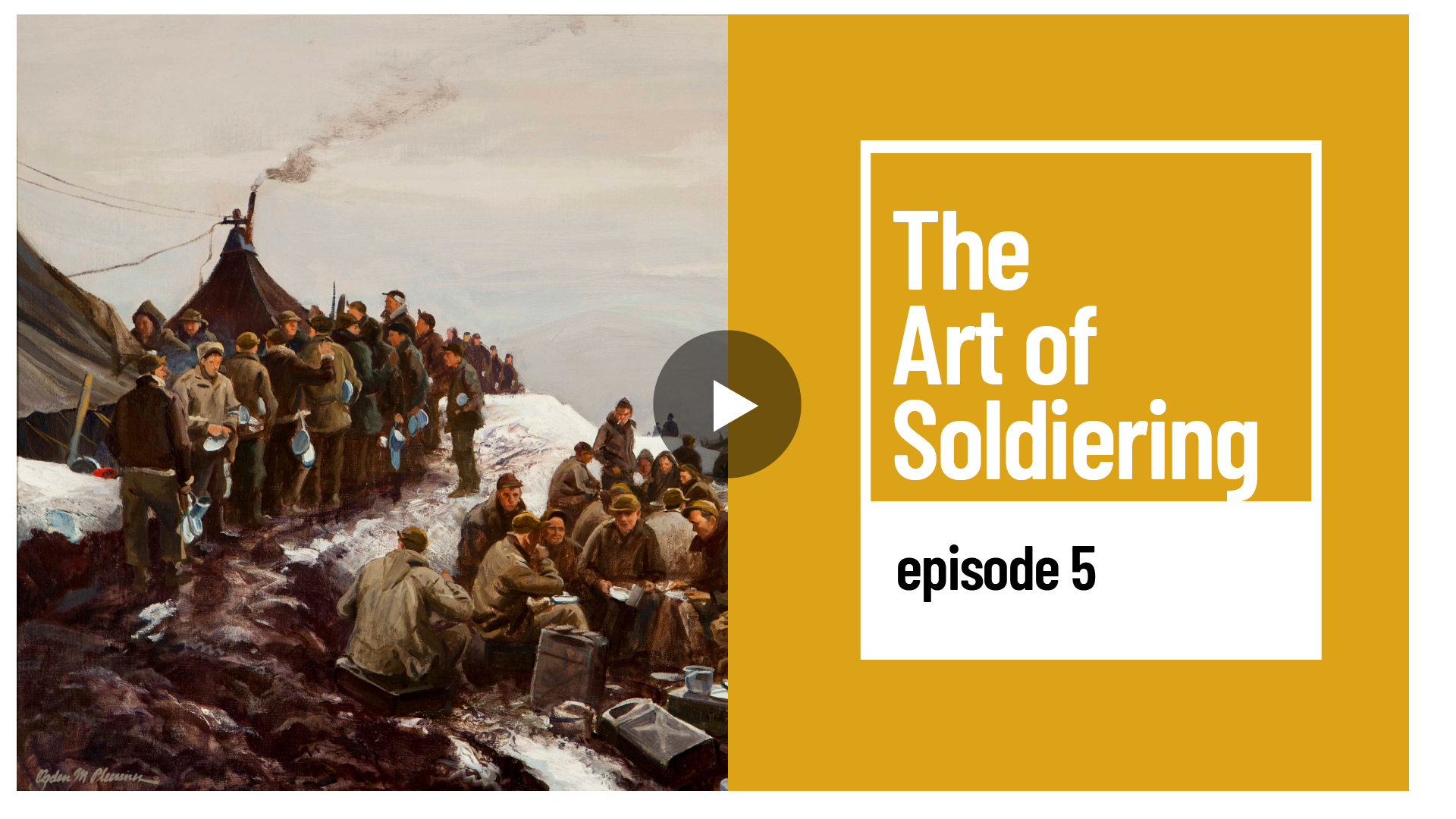
The first exhibit in the Special Exhibition Gallery is The Art of Soldiering, showcasing highlights from the U.S. Army’s Art Collection. From oil paintings to wood carvings to trench art, the Art of Soldiering offers personal perspectives of everyday Soldier life.
This episode of Curator’s Corner explores two pieces capturing Soldier life during Operation Desert Storm.
“Soldier Doing the Laundry,” Saudi Arabia, Sgt. 1st Class Sieger Hartgers, 1991, watercolor painting, depicts a Soldier from the 13th Quartermaster Battalion hand washing uniforms.
“MREs and a Cot,” Saudi Arabia, Sgt. 1st Class Peter Varisano, 1990, ink on paper, depicts a Soldier from the 101st Airborne Division having a meal.
Episode 4: Davy Crockett
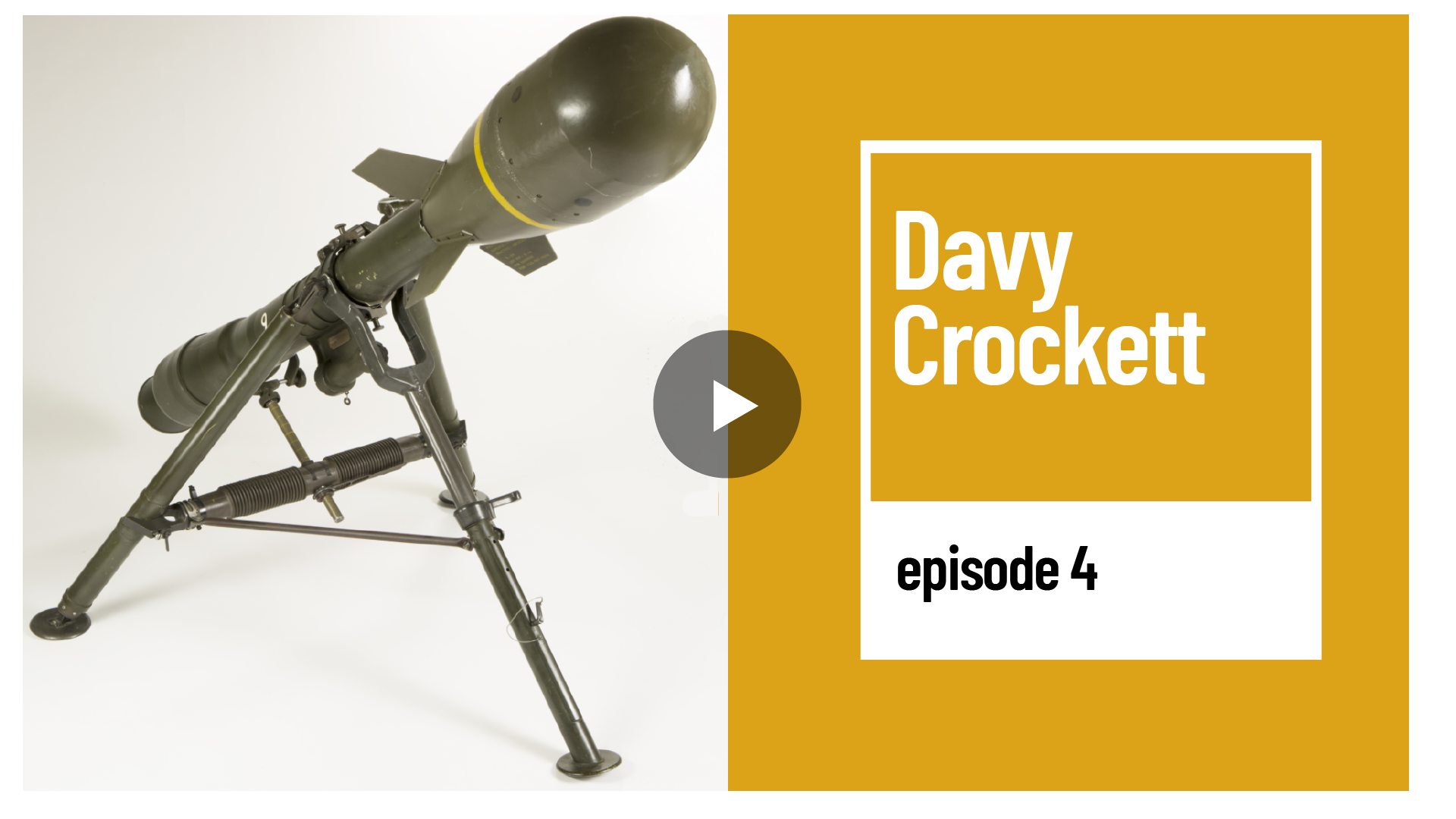
Learn about the fascinating Davy Crockett Nuclear Weapons System. In an effort to combat Soviet forces during the Cold War, the Army developed for the first time, a portable nuclear weapon known as the “Davy Crockett.” A prototype of the “Davy Crockett” was developed in 1958, then approved in 1961. After testing, the Army deployed the first Davy Crockett systems with armor and infantry battalions. Although the Davy Crockett was never used in combat, for 10 years, Soldiers were equipped with these systems in Guam, Hawaii, Okinawa, and South Korea. In 1971, it was fully retired from service. The development and production of this weapon represented the Army’s response in fighting the Soviet army on the nuclear battlefield—a real threat that shaped our military policy after WWII.
Episode 3: Humvee No. 1
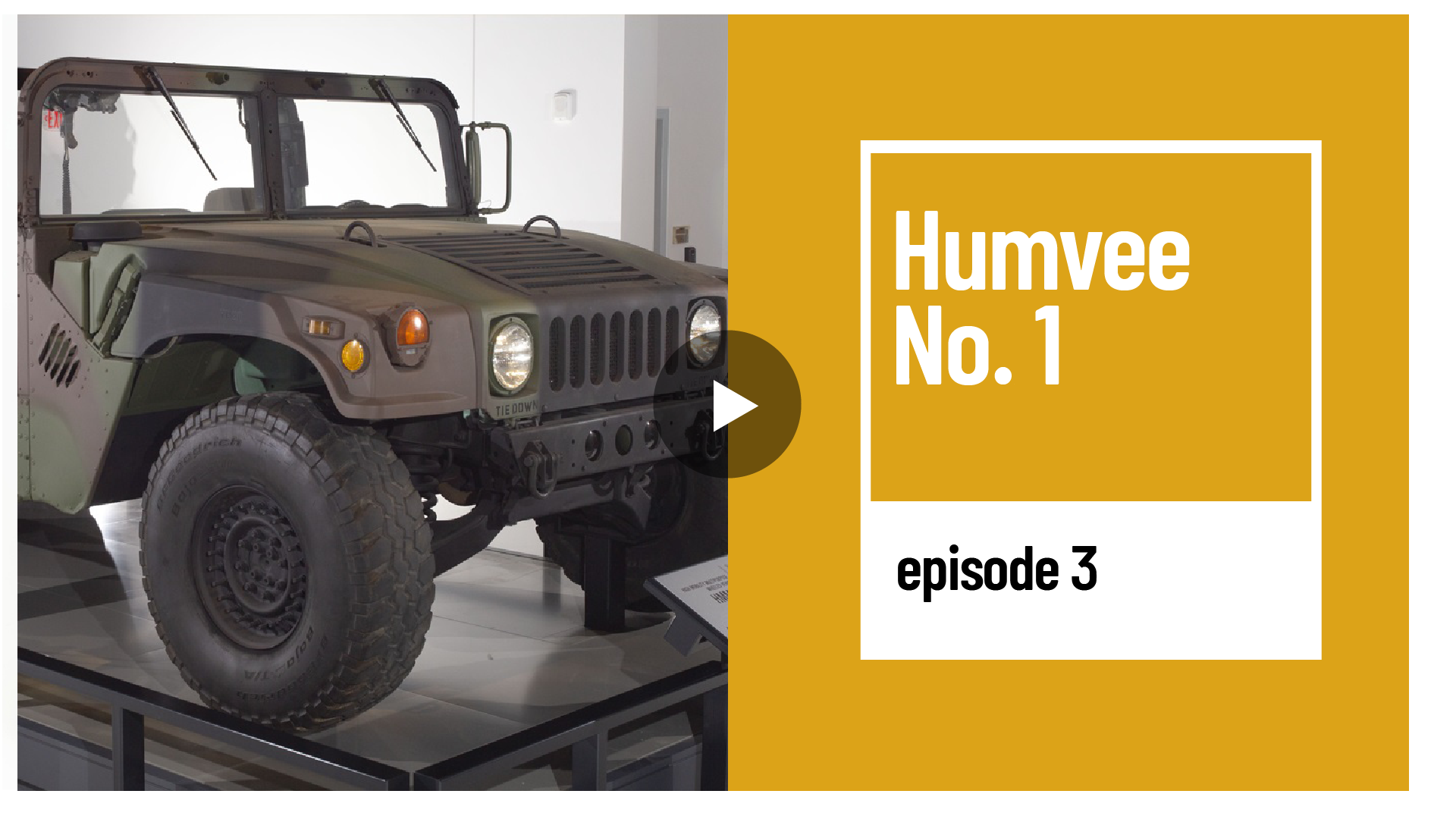
Learn about the iconic vehicle that most Soldiers within the last 35 years have come into contact with. The High Mobility Multipurpose Wheeled Vehicle (HMMWV), also known as Humvee, has seen combat in every American conflict since 1983 and has become a recognizable part of the Army’s public image. The HMMWV has forged a strong connection with American Soldiers around the world in becoming one of the most reliable vehicles in the Army. The Humvee has been developed into a number of specialized variants that enable nearly every type of Soldier role in the Army. HMMWVs were so successful that they have also been used by numerous allies, other countries, and have even been developed into a civilian variant.
Episode 2: POW Shirt and Pants
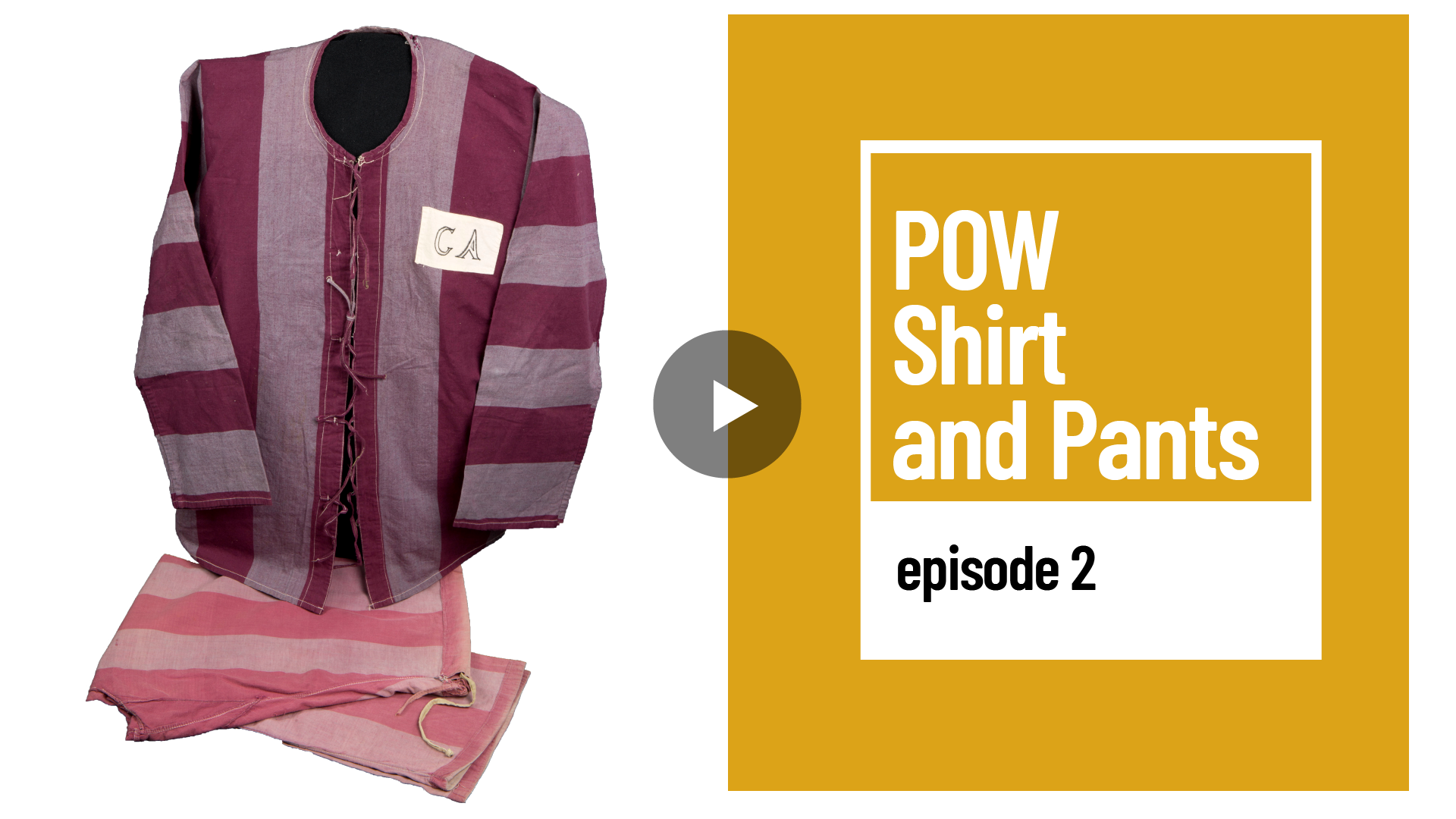
Discover the story of Staff Sgt. Jon R. Cavaiani through the pajamas he wore for nearly two years as a Prisoner of War (POW) in North Vietnam. Awarded the Medal of Honor, Bronze Star, and Purple Heart for his actions, Cavaiani continued to serve in the Army until his retirement in 1990. Cavaiani’s story is a compelling example of the Army Values.”
Episode 1: Nisei Soldier Bag
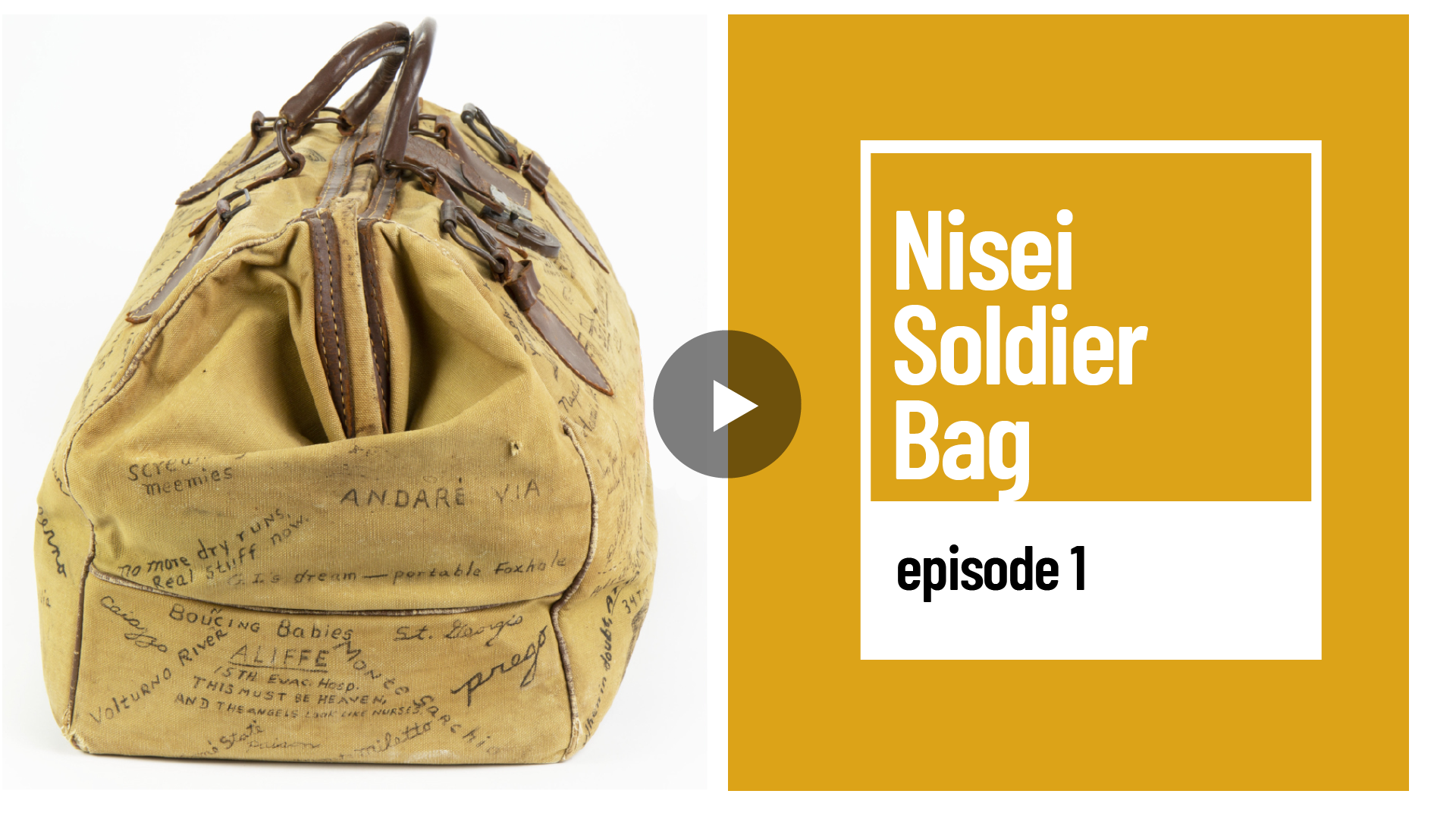
Sgt. Gary Uchida’s Canvas Travel Bag: The National Museum of the United States Army shares the Soldier’s story of Sgt. Gary Uchida who served in the U.S. Army’s 100th Infantry Battalion during World War II. Uchida kept an illustrated record of his Army experiences on this otherwise ordinary bag. Born in Hawaii, Uchida is also a second generation Japanese American, referred to as a “Nisei Soldier.”
Through the Nisei Soldier Experience, the Museum features artifacts that capture the rarely-told story of the Japanese American Nisei Soldier during World War II. This temporary exhibit highlights their struggles both at home and abroad. Their courageous acts on the battlefield and their long-awaited recognition culminating in the Congressional Gold Medal awarded to the Nisei Soldiers of World War II in 2000.
More from the Museum
Visit the Nisei Soldier Experience
